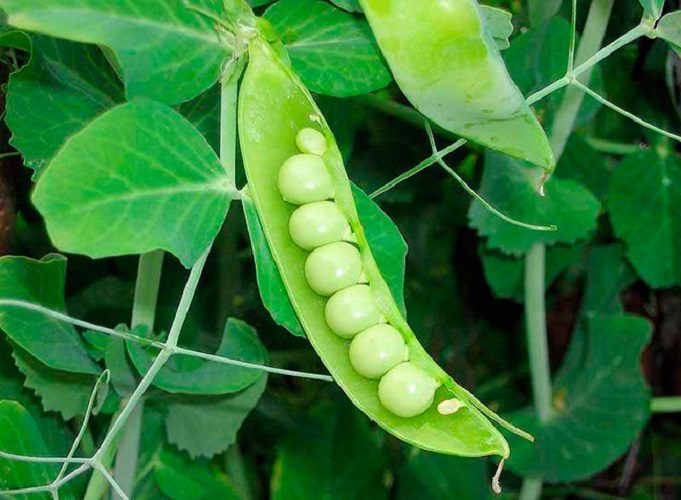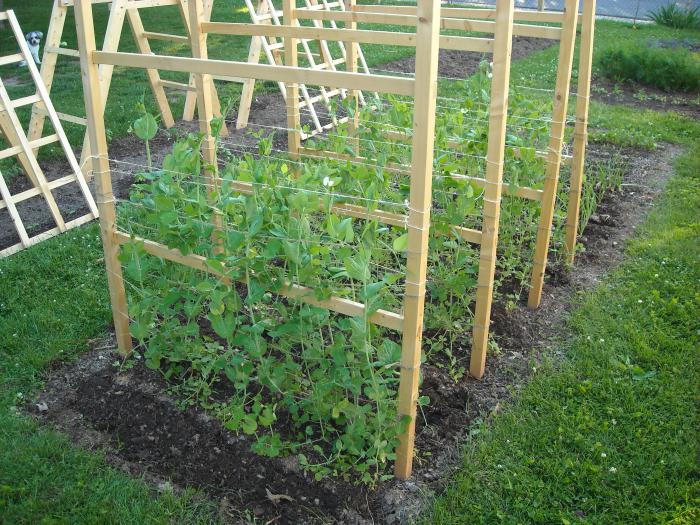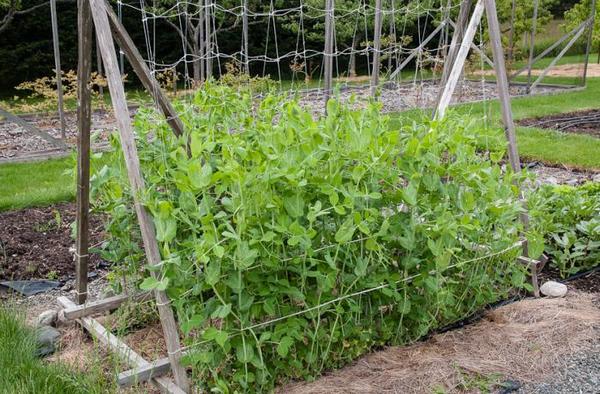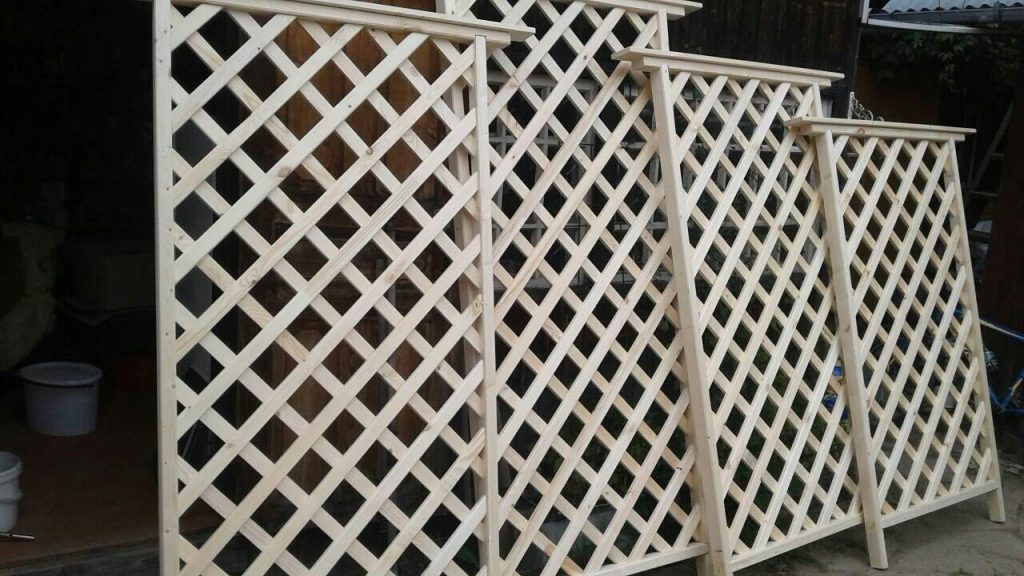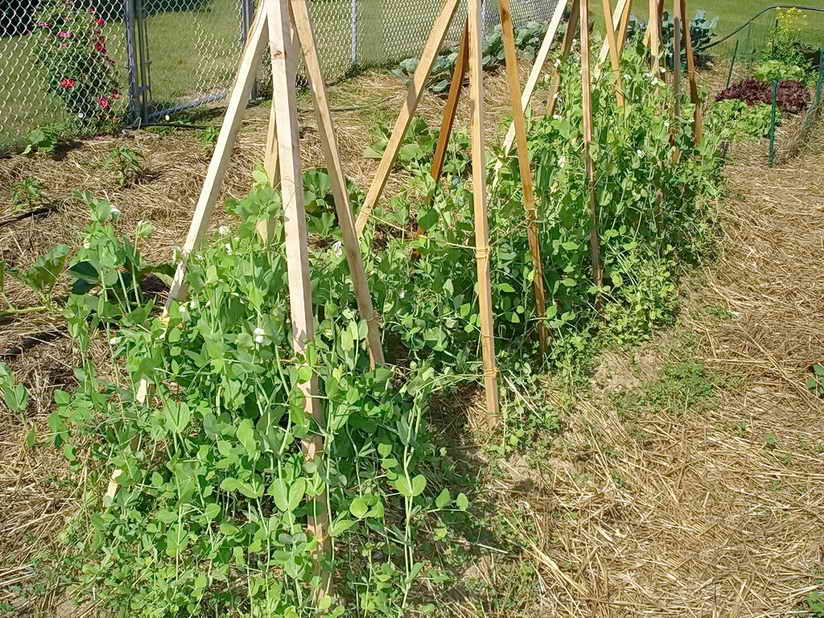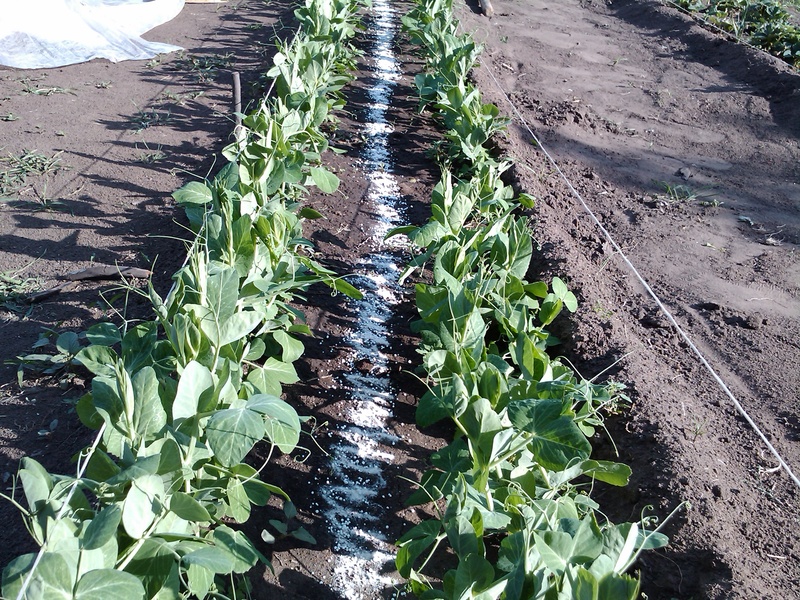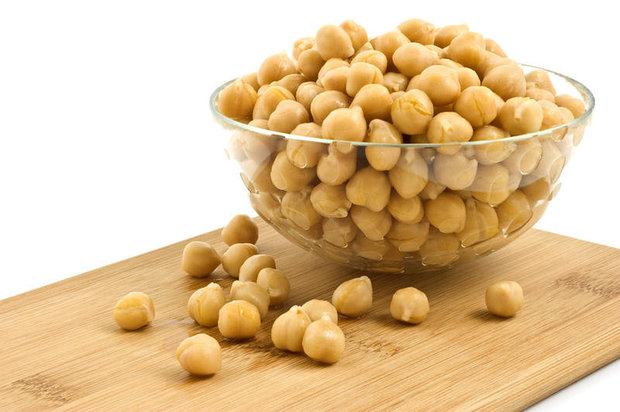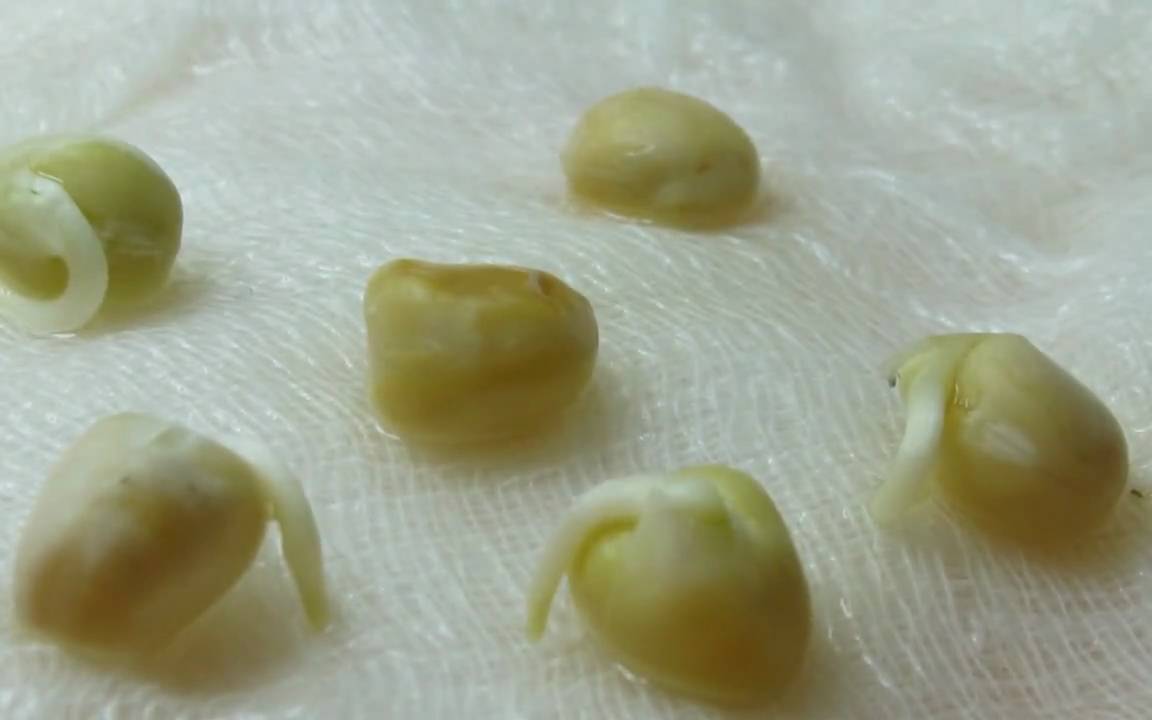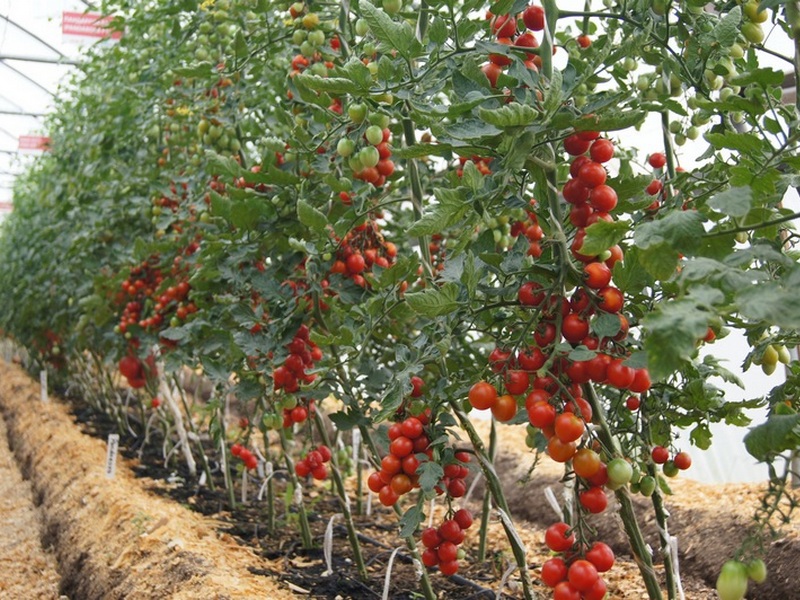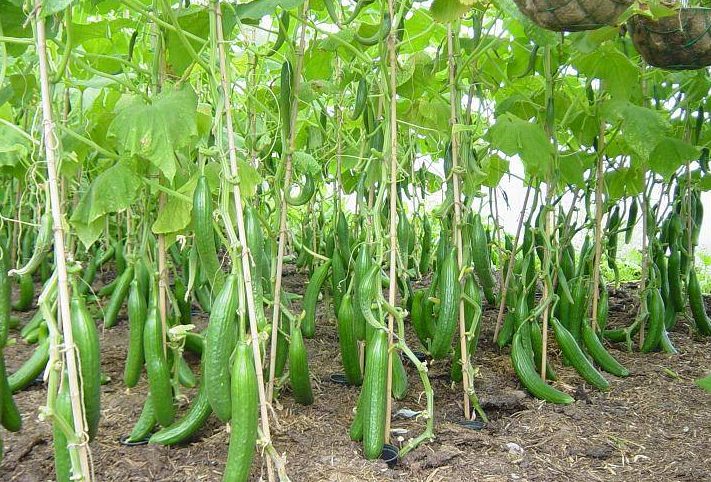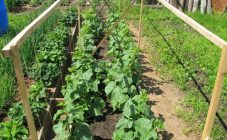Many gardeners grow peas in their summer cottages. He is loved for delicious fruits, unpretentiousness, ease of care. The culture is highly resistant to cold weather, it can grow in open ground in almost all Russian regions. Knowing how to tie peas can significantly increase the yield of a useful crop.
Why tie peas
There are several main reasons for taking care of a whip tie.
- The correct garter of the peas improves air circulation between the branches of the crop and also allows light and heat to reach the very bottom of the plant. This makes it possible to fully develop the stems, and the ripeness of the peas.
- Reliable support for peas reduces the risk of rotting, bacterial, fungal infections in rainy weather.
- The vertical planting of bushes significantly saves space in the garden. A beautiful fence transforms the garden.
- It makes it easier to carry out preventive and curative measures necessary for culture.
- Harvesting is simplified. The pods are clearly visible, which allows you to remove overripe fruits in a timely manner.
- Even one overly ripe specimen can cause the entire bush to dry out.
A plant planted without support is often attacked by burhus. This malignant beetle is considered the most dangerous for legumes. He is able to completely destroy the crop. Peas affected by the pest become unsuitable for food, sowing. They accumulate the toxic substance cantharidin.
From what moment are peas tied
When the sprouts reach a height of 15-20 centimeters and acquire the first antennae, they are carefully hooked up to the arranged supports. The branches will crawl up by themselves, embracing the structure. Now you need to make sure that they do not intertwine with each other. Conclusion - culture can do without tying. Just support is enough. However, the main stems of large heavy bushes must be tied to trellises.. For these purposes, use soft rags, thick threads or store fasteners.
If some complex decorative elements are to be created, pea supports must be installed before planting the plant. You can also sow sunflower or corn next to the crop. The stems of the plants will become natural holders for the pea branches.
There are also undersized pea species. They are planted in holes in two pieces. As they grow up, they cling to each other. Typically, packages of such seeds are labeled “lodging resistant”.
Types of supports
There are many options for making supports for pea bushes. It is better to focus on the peculiarity of the garden, the intended place of the garden, ornamental properties. Which of the presented methods to choose should be decided by the owner of the site.
Further we will talk about how to make a support for the peas.
Stakes
Fences like these are the simplest support devices for bushes.They can be installed at any time. Reinforcing rods, wooden sticks, bamboo fixtures, branches 1.5 - 2 meters long can be used as stands.
There are two ways to set up supports:
- At a distance of 10-15 centimeters from the stem, a single stick is driven into the ground next to each bush.
- The props are dug in along the entire length of the garden bed, leaving 50 cm gaps between them. At the level of the grown bushes, twine or rope is pulled from peg to peg. You can also install a grid.
As the culture grows, it is necessary to tie additional threads at intervals of 20-30 centimeters. Thus, a whole wall will form from the pea bushes.
Sticks can be stuck into the soil by tilting towards the center of the bed, rather than vertically. You will get a natural hut. This will have a beneficial effect on the development of culture.
Grid
You can buy a metal or plastic trellis net at a hardware store or gardening store. It is preferable to opt for the first purchase. The iron product can damage the plant. You will need 3 - 4 pegs 2-2.5 meters high to install the net. They are stuck at the beginning, middle, end of the beds. The roll is stretched. Fasten it on stakes using knitting wire or clamps. On each side of the grid, peas are sown in a checkerboard pattern, the antennae are hooked on the lower cells. Then they will crawl on their own. The width of the web should be 1.6 - 2 meters.
If the bed is formed along the fence, the mesh is fixed at an angle of 60 degrees. Then the plant is placed on the south side of the garden. This guarantees good illumination.
You can use industrial mesh to create a pea arch. Take 3-4 pieces of metal-plastic pipes 4-4.5 meters long. Each tube must be bent in an arc. Stick the ends into the ground. Two beds will merge into one. Throw a net for peas over the prepared frame. Fix it with wire. The stems will begin to curl along the mesh, at the top they will connect. You will get a beautiful pea tunnel.
Here's another way to tie peas outdoors.
This fence has several advantages. Galvanized mesh lasts several seasons. It can be moved to another place, left in the garden in the fall. With a careful attitude, plastic cloth has also been used for more than one year. Before the onset of cold weather, they clean the room.
Trellis
It is known that pea culture can be grown in one place for two consecutive years only. Therefore, a portable pea trellis is a great find.
The stand is assembled simply.
You will need:
- 4 beams (height 1.6 - 2 meters);
- 8 horizontal slats;
- twine;
- screwdriver, screws.
Master class on assembling trellises (each gardener makes according to the size of his garden):
Connect the vertical posts together at an angle with screws to get two triangular shapes. Fasten them to each other with cross bars.
Tie a twine or cord to the horizontal bars with an interval of 30 centimeters. The finished structure will look like a ladder.
How to tie peas in a garden bed: one of the options is to install one and a half meter supports along the edges of the beds. Rope is pulled on them in several tiers. The first row should be 15-20 cm high from the surface of the ground so that the antennae of the plant can grab onto it.
You can build structures like pyramids. The frame is made similar to the roof of a house. The rectangular base is placed on the garden bed. Ropes are attached to the sloping poles.
Hut
You can put a similar structure for the peas. The green "house" looks very impressive on the site.On the outer sides of two beds, stakes about two meters high are driven in at a slope of arcs to the other. They form the letter "L" over the peas. There should be a space of 100 centimeters between them. At the intersection, all sticks are fixed with twine or rope. All pairs are connected with one rail, forming one long frame.
For the manufacture of these structures, branches, stakes, sticks, twigs are used. Such supports increase the yield.
Wigwam
The pea "teremok" will decorate the garden area. A central pole with a height of 2 meters is installed. Stakes are driven in a circle at a distance of 70 centimeters from it. Tilt them towards the center.
At the top they are connected to each other. Tied tightly to the main base. Seeds are sown on both sides of the pegs.
Bicycle rim
Various improvised means are used to tie peas. For example, bicycle wheels. Each such structure is capable of supporting at least 25 bushes.
- Two rims are remade for the future trellis (the spokes are removed).
- Having previously measured the diameter of the wheels, crosspieces are made of two wooden slats or bars.
- Finished frames are attached to the rims through the holes from the knitting needles.
- A pre-prepared stake (height 1.8 - 2 m) is nailed perpendicular to one of the crosses. The other end of the pole is connected to the second rim.
- Threads are pulled between the two wheels.
- The support is installed vertically on the garden bed. Sow seeds on the inside and outside of the circle. To make the structure more stable, it can be secured with construction brackets or tent pegs.
Fence
Many owners of summer cottages plant pea bushes along garden fences. This method saves space and also does not require the cost of additional materials.
- A wooden fence is considered an excellent option. It keeps you warm. Does not heat up from sunlight.
- A mesh-netting fence is considered very convenient. The antennae of peas can themselves cling to the cells, and light freely penetrates through them.
- A solid metal fence is called unsuccessful. It quickly heats up from the sun, becoming unbearably hot. The stems of the pea bushes will simply dry out.
Curly bean garter
The do-it-yourself curly bean support looks interesting. It can be a trellis, a hut, a net, in a word, everything that peas are fastened with.
Agrotechnics
Sowing of peas begins in the third decade of April and ends in July. You can sow seeds every 10 days. This will allow you to enjoy the sweet peas for several months in a row.
For pea bushes, you need to choose an open, but protected from the winds, solar garden. The culture prefers light, fertile soil. True, soil that is too rich in nutrient composition is undesirable. This is especially true for nitrogen.
The ground for peas is prepared in the fall. They dig it up, add superphosphate, potassium salt (by 1 M2 / 50 and 20 gr.). The acidic soil is sprinkled with ash (0.3 kg / 1 m2). Pea beds are best done on the "ridges" - high. Furrows should be at least 8 centimeters deep and 0.5 meters apart. The hole is filled with compost and ash, then earth. The grains are laid out every 7-10 centimeters, sprinkled with soil, compacted and watered.
When two weeks have passed from the moment the sprouts appear, the ground around them is loosened, the young shoots are heaped. The emerging weeds are regularly weeded out (several times per season).
After installing the supporting structures, the tops of the seedlings begin to pinch. After some time, the same procedure is done with the side shoots.
Watering plants is carried out once a week, in hot summer - twice.
The main insect pests of peas are: leafworms, pea moths, garden moths, cabbage scoops.
Control measures:
- infusion of garlic (20g / 10 liters of water). Strain. Spray foliage;
- a liquid solution of tomato tops (3kg / 10 liters of water). Spray the culture;
- in case of severe damage, use Fastak, Iskra.
Peas can be affected by a viral infection with mosaic, powdery mildew. Treatment is carried out with the fungicide Topaz, Topsin-M, Quadris.
Harvested 65-80 days after sowing the peas. Remove the pods carefully so as not to damage the bushes.
The remaining pea vegetation is considered a good fertilizer; it saturates the soil with nitrogen.
Growing peas is not difficult. By following simple rules of care, you can achieve a good harvest.
